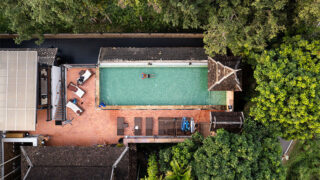If you love mooching around Dempsey Hill, there’s plenty to discover about Singapore history while you’re there. The first thing to know about the history of Dempsey is that it takes its name from a British commander-in-chief, General Sir Miles Christopher Dempsey (1896-1969). Before he came along, the area was called Mount Harriet (from around the 1850s); it was part of a huge nutmeg plantation of 1,600 trees, reaching all the way to what is now the Singapore Botanic Gardens.
In 1857, a nutmeg-beetle blight made the land useless for growing, forcing the estate to close. The owners sold the land to the British in 1860 for a mere 25,000 Spanish dollars.
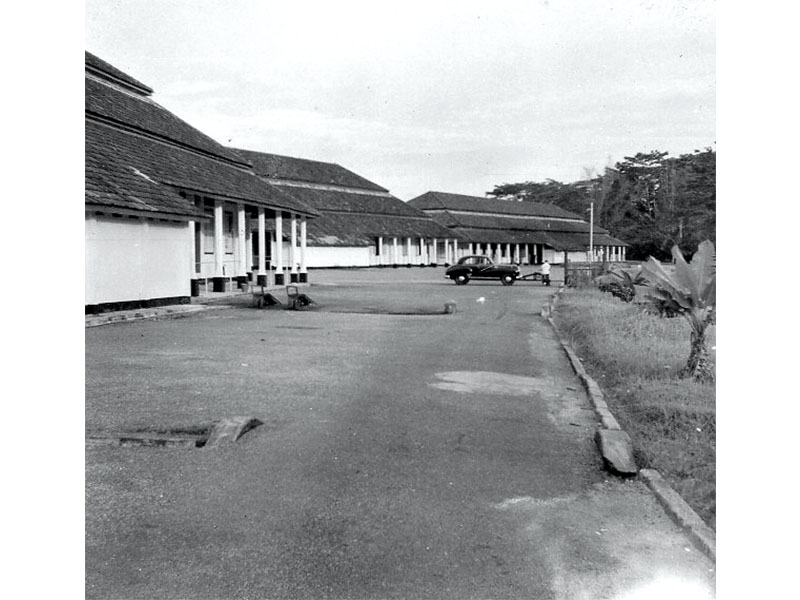
The barracks at Dempsey Hill
Singapore had become an important strategic stronghold for the British Empire by this time. The Tanglin area was the perfect spot for new troops to be kept safe. Ten service barracks for 50 men each were built in the early 1860s, in addition to washhouses, cookhouses, a school and more. The buildings had plenty of windows and doorways to help with air flow; Singapore’s conservation guidelines now protect this architecture.
During World War II, the Japanese used the barracks to store medical supplies and house POWs. Then, after the Japanese surrender, British forces retook Tanglin Barracks, making them the General Headquarters of the Far East Land Forces.
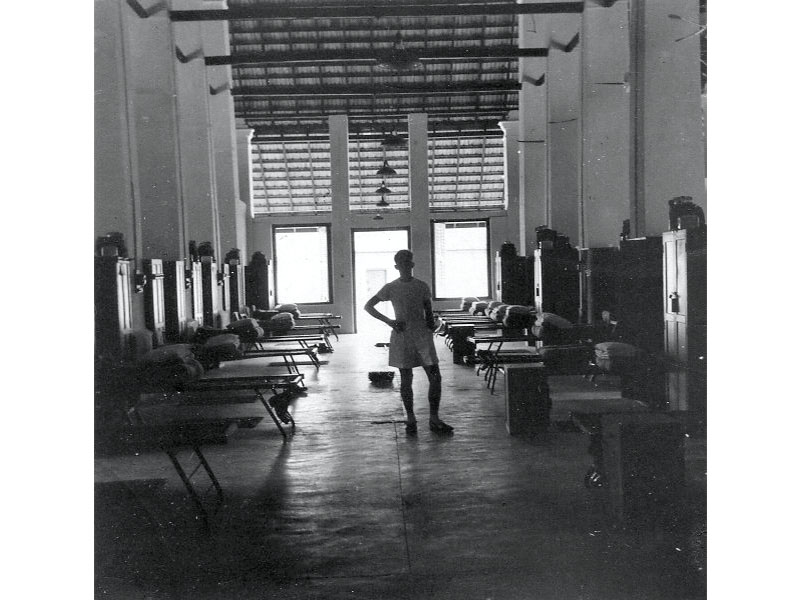
According to former British serviceman Gary Bennet, around 500 troops lived in identical, nondescript buildings in Blocks 7, 8, 9 and 10 at Dempsey Road. “They had access to facilities such as a swimming pool and cinema, both now demolished, and a gymnasium overlooking the cricket pitch; that building that still stands today.”
Gary lived in Block 9, which had enough accommodation for 45 to 50 servicemen. Each block consisted of three sections with the middle section used for communal washing, showers and toilets. Today, it’s home to REDSEA Gallery, ARTitude Galeria, The Dempsey Project and also Forketta.
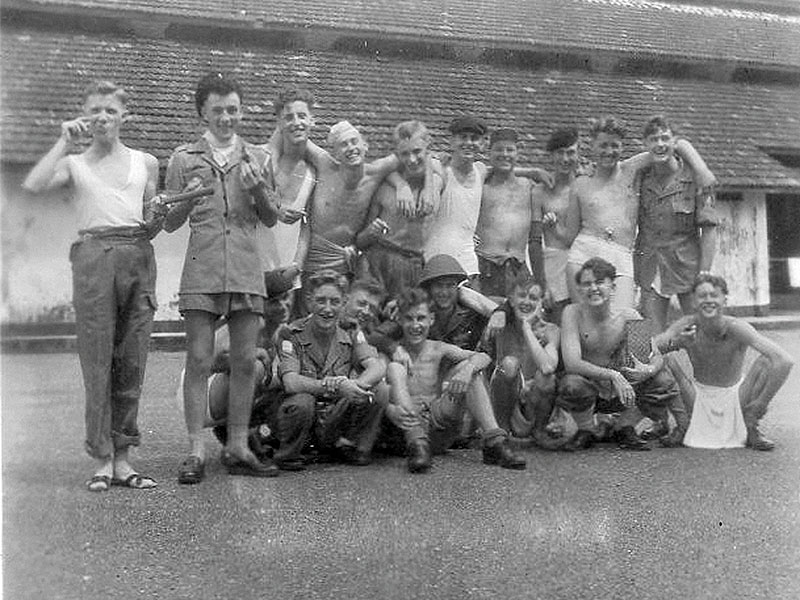
New directions
After the last British forces left in 1976, Singapore’s government took ownership; they used “Tanglin Camp” for military purposes. As you walk between Blocks 15, 17 and 18, you can imagine anxious parents gathering to wave off their sons as they reported for conscription back in the 70s and 80s.
The area was vacated in 1989. Gradually, the old military barracks were converted into the unique and special enclave it is today. Even now, though, you can visit some very special historical spots in Dempsey. One of these is St George’s Church, an Anglican church originally built for the garrison – it only becoming a place for civilians to worship in 1971. During WWII, Japanese forces stored ammunition in the building. Fearing the stained-glass windows would be destroyed, the colonial chaplain had them dismantled and buried. Unfortunately, he died without disclosing their whereabouts, and nobody knows where those original windows are today! The classical Basilica-style church is now a national monument.
Other historic buildings in the area include a chapel that was used as a school for children of British soldiers, and a block that was formerly the Singapore Civil Service Clubhouse, where sports and games were played between Singapore and Malaysia. Both are occupied by dining venues today.
One building that’s no longer standing is the Old Military Hospital; it once overlooked the housing facilities and parade grounds of Dempsey. This area is now known as Loewen by Dempsey Hill, and it has been restored and transformed into an education and lifestyle destination for families. There are plenty of activities for kids, from swim classes at Swish! Swimming to gymnastics classes at The Yard, and art classes at Duxton Playground. What’s more, parents can sign up for a chocolate-making class at Anjali Chocolat or a spa session at Trimmings & Spa.
Dempsey Hill today
If you happen to develop an appetite while wandering around the historic buildings of Dempsey Hill, the good news is that it’s a thriving hub of restaurants, cafés and bars, with something delicious to eat, drink or nibble at every hour of the day. Highlights include JUMBO Seafood, where you can try Singapore’s iconic chilli crab, Chopsuey Café, which is a great spot for a cocktail or some Chinese classic dishes with a twist, and modern European restaurant MOONBOW. Other options include Italian fare at Da Paolo or Forketta, modern Asian cuisine at Hathaway or SIRI HOUSE, as well as a bunch of other family-friendly restos.
You can satisfy more than just a hunger at Dempsey too – from browsing the oriental furniture at Woody Antique House or Maywell Lifestyles, to exploring the exquisite rugs at Hedgers Carpet.
Find out more about Dempsey Hill past and present at dempseyhill.com.
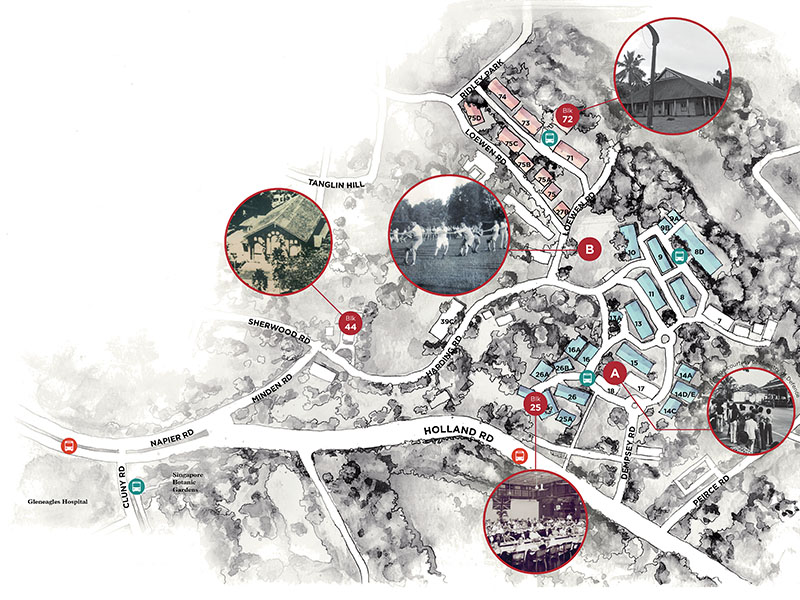
Did you know?
The barracks inspired young Rudyard Kipling to write Barrack-Room Ballads (1892).
For more helpful tips head to our Living in Singapore section.
Churches and other places of worship in Singapore
Our go-to tailors
This article first appeared in Expat Living; purchase a copy or subscribe so you never miss an issue!



